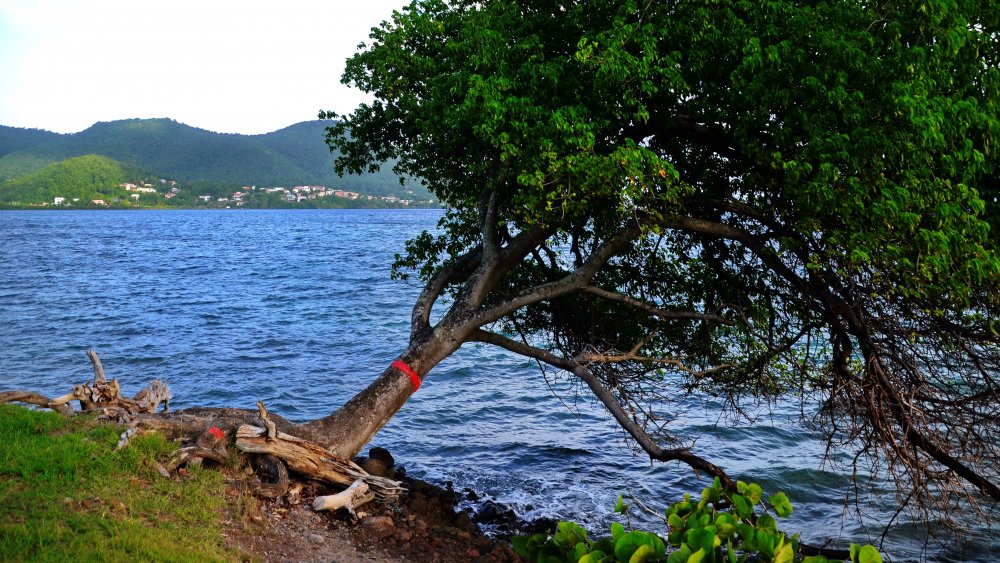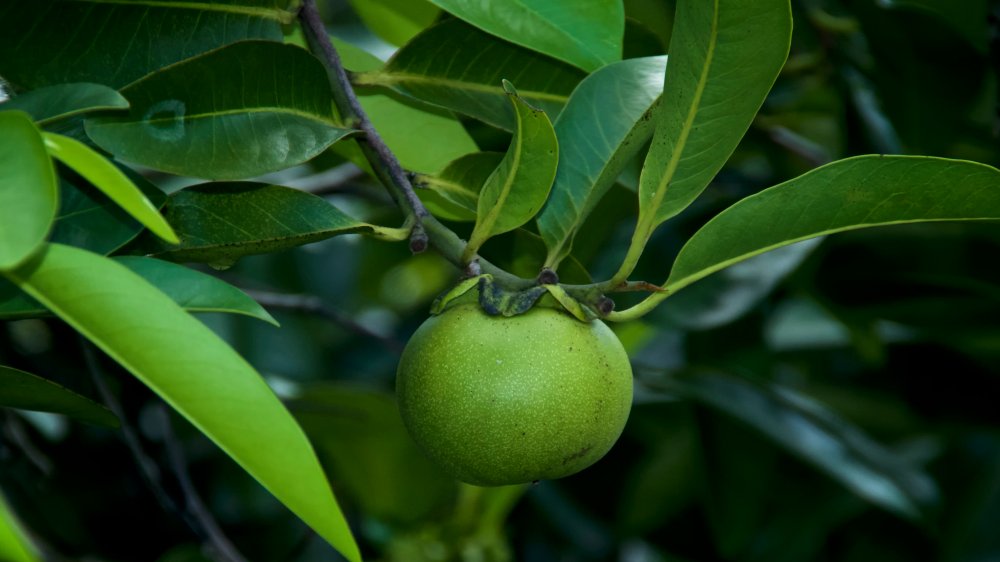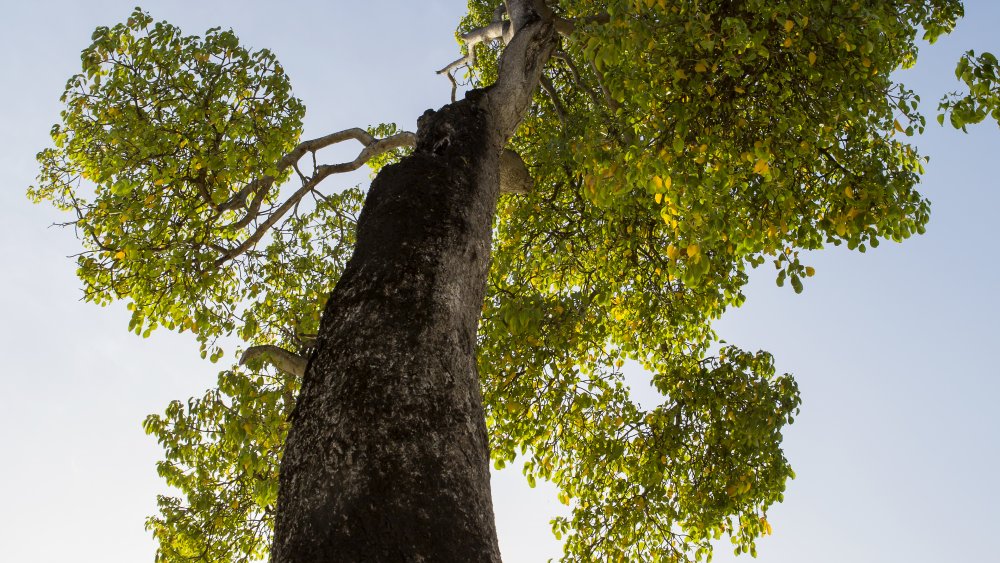The Truth About The Most Dangerous Tree In The World
Per Guinness World Records, the world's most dangerous tree takes the form of the manchineel, typically found in Mexico, Central America, the Caribbean, and of course, Florida. No, this tree won't actively try to crush you like the Whomping Willow or give you horrible, horrible nightmares as a child. They aren't Screaming Trees, either, like the forgotten 90s band. But you should definitely avoid this plant at all costs.
The trunk of a manchineel is what you should be wary of, particularly the poisonous and acidic milk-white sap that it oozes. Any skin contact with manchineel sap can cause a breakout of painful blisters, as well as blindness if the sap gets into one's eye. According to Guinness, standing under the tree in the rain is enough to cause skin blistering due to a mixture of sap in the falling raindrops. Let's face it: the manchineel takes the cake for plants that definitely want to kill you.
Little apple of death
You definitely don't want to mess around with this tree either: biting into one of its apple-like fruits (known as "beach apples") can prove fatal, as well as cause blistering and severe pain. Experts warn that the seemingly harmless snack can cause internal bleeding, shock, and bacterial superinfection, as well as potential airway restriction.
One unfortunate soul unknowingly tried his fate by munching on the fruit, via the US National Library of Medicine, describing a "pleasantly sweet" taste at first, then a "strange peppery feeling ... gradually progress[ing] to a burning, tearing sensation and tightness of the throat. The symptoms worsened over a couple of hours until we could barely swallow solid food because of the excruciating pain and the feeling of a huge obstructing pharyngeal lump."
One present-day Spanish moniker for the tree is manzanilla de la muerte ("little apple of death") or árbol de la muerte ("tree of death"), which sounds nothing short of horror movie material. Even burning a manchineel can be extremely dangerous, as the resulting smoke can cause blindness if blown into someone's eyes.
Legend has it that the tree even killed the famed explorer Juan Ponce de Leon, who led the first European expedition into Florida in 1513, per Mother Nature Network. The story goes that a member of a native tribe added sap from the manchineel to poison his arrows, which struck Ponce de Leon during a 1521 battle. The conquistador fled to Cuba where he ultimately died of his wounds.
Deadly, but useful
Several countries have taken steps to prevent individuals from having contact with the manchineels: the island nation of Curacao plants warning signs next to the trees, while trees are marked with a red band in the French Antilles.
Despite the immediate danger of the manchineel tree, locals have used the tree to their benefit for centuries. The hefty trees can grow up to 50 feet tall, and have been a source of wood for Caribbean carpenters who make sure to cut and dry the wood in a way to remove all sap. Additionally, dried manchineel fruits have been used through the ages as a natural diuretic. The tree is also commonly found on beaches and swamps with roots stabilized in the sand, thus naturally preventing beach erosion.
So, unless you happen to be a black-spined iguana, which Medium lists as one of the rare exceptions to the tree's nonpartisan warpath, capable of eating its fruits and living among its branches — stay far away.


